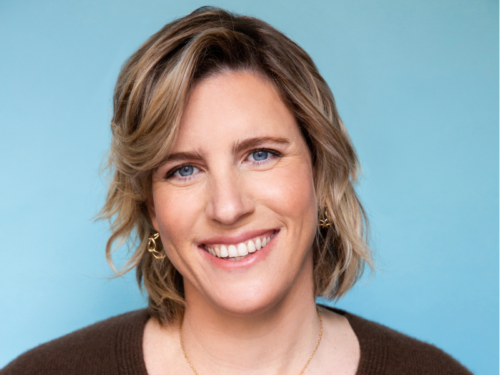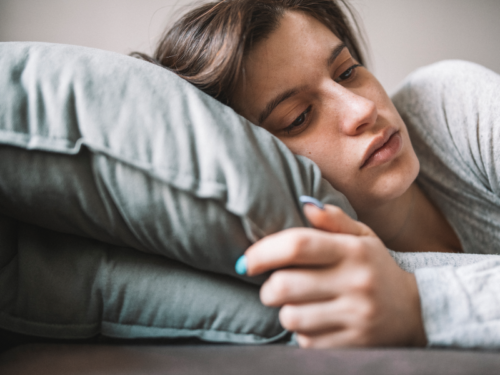
Table of Contents
What Is the Best Therapy for Borderline Personality Disorder (BPD)?

Written By: Alex Bachert, MPH

Clinically Reviewed By: Dr. Don Gasparini
February 23, 2024
6 min.
Most borderline personality disorder symptoms are manageable with treatment.
Learn more about our Clinical Review Process
Table of Contents
Borderline personality disorder (BPD) is a personality disorder that affects a person’s ability to manage their emotions and influences how they view themselves and others. However, BPD symptoms like intense feelings, self-destructive behaviors, and difficulty with interpersonal relationships are manageable with treatment.
“Quality treatment can increase the chances of the full resolution of borderline personality disorder symptoms,” said Dr. Caroline Fenkel, Charlie Health’s Chief Clinical Officer and Co-Founder, in an interview. Below, we delve into evidence-based treatments that can effectively reduce symptoms and improve functioning for people with BPD.

Start BPD therapy today
We offer evidence-based treatment for BPD without a waitlist.
Best therapy for BPD
When left untreated, BPD can impact quality of life and increase the risk of depression, substance use, self-harm, and suicidal thoughts. But the good news is that treatment is available.
“The main treatment indicated for BPD is psychotherapy,” said Fenkel. BPD is usually diagnosed in late adolescence or early adulthood, data shows, and the sooner you receive a diagnosis, the sooner you can begin therapy.
Dialectical behavior therapy (DBT)
Dialectical behavior therapy is a subtype of cognitive behavioral therapy (CBT) that was created to teach people how to understand and regulate their emotions. DBT was originally developed in the 1980s to treat suicidal individuals with BPD and is now considered a leading treatment for people with a primary diagnosis of BPD. One study even found that 77% of people with BPD no longer met diagnostic criteria after just one year of DBT treatment.
DBT is taught as a series of skills to help people manage uncomfortable thoughts, feelings, and behaviors. Some of these skills include mindfulness, emotion regulation, interpersonal effectiveness, and distress tolerance. Another notable feature of DBT is that it includes several types of sessions. In addition to weekly one-on-one sessions with a trained therapist, you’ll also participate in group sessions and have access to phone coaching between sessions.
Mentalization-based therapy (MBT)
Another type of talk therapy that was created to treat BPD is mentalization-based therapy (MBT). MBT focuses on improving emotional regulation and mentalization, meaning the ability to understand how your mood and emotions intersect with the mood and emotions of the people around you.
MBT’s goal is to help people with BPD improve their interpersonal skills and create healthier relationships with others. It also teaches people to better understand how their own thoughts impact their behaviors. For example, if someone with BPD has an urge to self-harm, they may follow through without thinking about it. Mentalization can offer perspective to realize that’s not a healthy reaction to feeling upset.
Schema therapy (ST)
Schema-focused therapy is a type of psychotherapy that focuses on identifying and changing unhealthy ways of thinking. It’s based on the idea that unmet needs during childhood (such as love, safety, and acceptance) can cause people to develop unhealthy ways of viewing and interacting with the world. But with the support of your therapist, you can learn to identify harmful views and assumptions and create meaningful change in your life. One study found that people who participated in ST for BPD experienced increased insight, improved self-confidence, and increased cognitive flexibility related to considering alternative perspectives and being kinder to themselves.

Transference-focused therapy (TFP)
Transference-focused therapy is a BPD treatment that uses a person’s relationship with their therapist to change how they relate to other people in the world. TFP posits that dysfunctional relationships during childhood can contribute to BPD, and learning how to build healthier relationships as an adult can help reduce BPD symptoms and improve overall quality of life. Through twice-weekly sessions with your therapist, the goal is to learn how to identify problematic thoughts, improve self-esteem, develop healthier behaviors, and improve social interactions.
Systems training for emotional predictability and problem-solving (STEPPS)
STEPPS is a BPD treatment designed specifically to supplement other types of therapy. Over 20 weekly sessions, people learn emotion regulation and behavior management skills in a group setting. Research shows that STEPPS can help reduce depression and other BPD symptoms.
How do I know which therapy is best for me?
The first step in treating BPD is to meet with a trained mental health professional for an assessment and diagnosis. Typically, this includes reviewing your personal and family health history, symptom severity, and a medical exam to rule out co-occurring conditions that may be causing symptoms. The assessment might also include questionnaires or screening tools to identify a person’s risk for BPD.
From there, the exact treatment will depend on each person’s unique needs. BPD is a complex condition that looks different for each person, so there’s no one-size-fits-all solution for managing symptoms. Below are a few questions to consider when discussing therapy options with your provider.
- How long are you willing to commit to therapy?
- Are you okay with therapy homework?
- Would you like to connect with your therapist between weekly sessions?
Additional advice for managing BPD
Managing BPD is a collaborative process with your mental health professional, so the best way to prioritize your well-being is to adhere to your treatment plan. That said, there are several other tools and techniques that people can use at any time to help manage symptoms.
Create a self-care box
A self-care box is sort of like a first aid kit for your mental health. To build a self-care box, collect various items to comfort you when you’re struggling, for example, a soft blanket, your favorite book, notes of encouragement, or special photos. You can also make a digital self-care kit by saving certain photos, music, or messages on your phone.
Keep a mood journal
Documenting your moods can be a helpful tool for identifying triggers and working through intense emotions. For some people, writing down difficult thoughts or feelings can make them feel less overwhelming. A mood journal is also a chance to review what’s going well that day; for example, maybe you had a positive conversation with a friend or managed to avoid a confrontation with your boss.
Involve your loved ones
BPD is known to affect people’s relationships, so educating your loved ones on the condition may help them better understand why you feel and behave the way that you do. And if a troubled relationship is becoming too distressing to you or your loved ones, consider trying family therapy or couples therapy. For example, family therapy can help adolescents develop healthier ways of communicating with their parents, while couples therapy can empower people to build healthier, more stable relationships with their partner.
Medication management
Some people benefit from a combination of talk therapy and medication management to treat BPD symptoms and co-occurring mental health conditions like anxiety and depression. If you think you’d benefit from medication, speak with your mental health professional about adding an antidepressant, antipsychotic, or mood stabilizer to your treatment plan.

Borderline personality disorder therapy at Charlie Health
If you or a loved one are struggling with a complex mental health condition like borderline personality disorder (BPD), Charlie Health is here to help. Charlie Health’s virtual Intensive Outpatient Program (IOP) provides holistic, more than once-weekly mental health treatment. Our expert clinicians incorporate evidence-based therapies into individual counseling, family therapy, and group sessions. With treatment, managing your mental health condition is possible. Fill out the form below or give us a call to start healing today.
References
https://dictionary.apa.org/borderline-personality-disorder
https://www.ncbi.nlm.nih.gov/pmc/articles/PMC2816926/
https://ajp.psychiatryonline.org/doi/full/10.1176/ajp.2007.164.6.922
https://www.nimh.nih.gov/health/topics/borderline-personality-disorder
https://www.nami.org/About-Mental-Illness/Treatments/Psychotherapy




